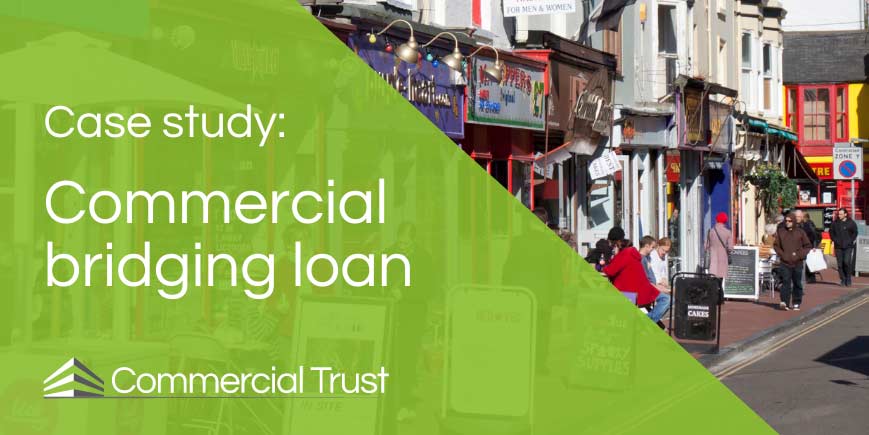This information should not be interpreted as financial, tax or legal advice. Mortgage and loan rates are subject to change.

Categories: Case study | Case study bridging loans | commercial mortgages
Case studySummary of the case
- Property was a semi-commercial premises, comprising retail space and two flats
- Client was on a bridging loan but had inadvertently breached its terms
- Client needed new bridging loan to complete works
- Exit strategy is to pay off the bridge with a semi-commercial mortgage
What we achieved for the client
- Completion achieved in 4 weeks from initial enquiry, on the day the previous loan expired
- We saved the client from a default, for non-payment of the existing bridging loan
- We have secured semi-commercial exit finance for the client
Refinancing a bridging loan quickly to avoid a default
Sometimes property investment clients find themselves in very complex circumstances and under a lot of pressure to find a borrowing solution, this was certainly the case with this scenario.
The investor in the case had purchased a semi-commercial premises, comprising a retail space with two flats above, with a bridging loan and was refurbishing the property.
The client had taken out a light refurbishment bridging loan, in order to get works done on the property and needed our help to secure onward long-term finance.
We secured a semi-commercial mortgage deal for the client, but we were unaware works were still being done, so the mortgage could not go ahead.
Furthermore, it became apparent that the extent of the work constituted ‘heavy refurbishment’ in the eyes of the lender, but the product was for ‘light refurbishment’, so the terms of the bridging loan the client had in place had been breached.
Our job was to source a further bridging loan, to pay off the existing borrowing due to the the nearing expiry date.
We had 4 weeks to turn the situation around.
What happens when a bridging loan expires?
There are three potential outcomes if a bridging loan expires and has not been repaid:
- Your lender may offer you an extension, if they can see good reason for a delay and that you have a sound exit strategy;
- Your lender may repossess the property; which would significantly affect further borrowing
- Your lender may charge you a large fine.
Ultimately, being stuck on a bridging loan is a very serious position to be in. A reputable financial professional who arranges a bridging loan for you should always discuss with you how you will repay/exit the bridge. If they don’t it is extremely unwise to proceed with the deal.
Your exit strategy might be to sell the property, or to transfer onto a long-term mortgage, commonly referred to as a term loan. As a property investor, this could be a buy to let mortgage, a semi-commercial mortgage or a commercial mortgage.
What we achieved for the client
Fortunately, we found a suitable commercial bridging loan product. We submitted the deal to the lender on 4th of July. The client had not at this point provided the documents the lender required, and was unable to do so, as they were temporarily abroad. This added even more pressure to the turnaround time.
On 12th July the client was back, and supplied the necessary documentation for the case to progress. We chased the deal through with the lender and managed to get it to completion in the nick of time, it paid out the day before the existing bridging loan expired.
If we had not secured the finance in time, the client would have been subject to a default on the unpaid bridging loan, potentially impacting their ability to find a new lender given the adverse nature of a missed payment.
We have also arranged and submitted with a lender the exit finance for the property, which will be a semi-commercial mortgage.
If you need a bridging loan to purchase a property that you want to refurbish and sell, or rent to either residential or commercial tenants, contact us today.



